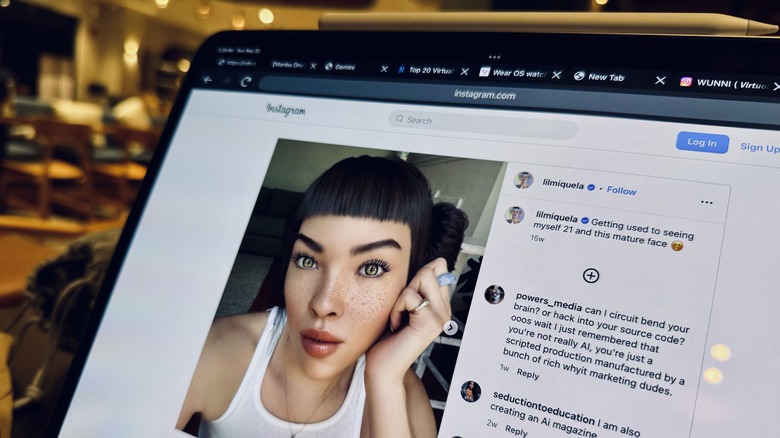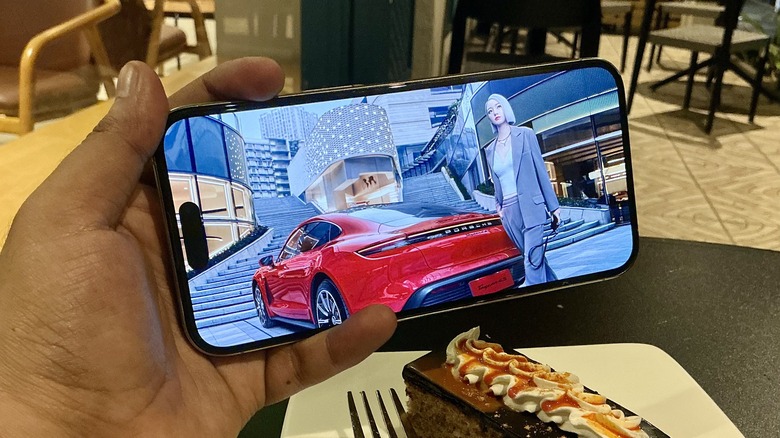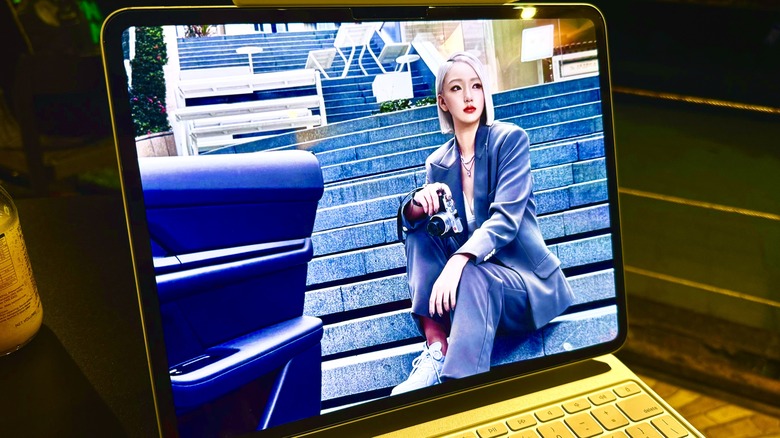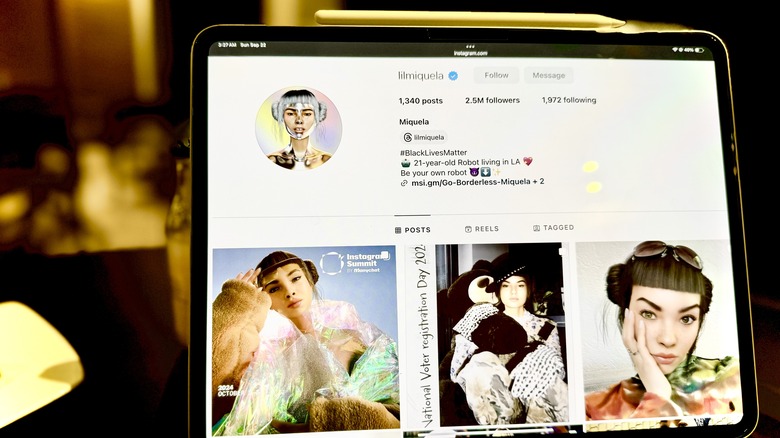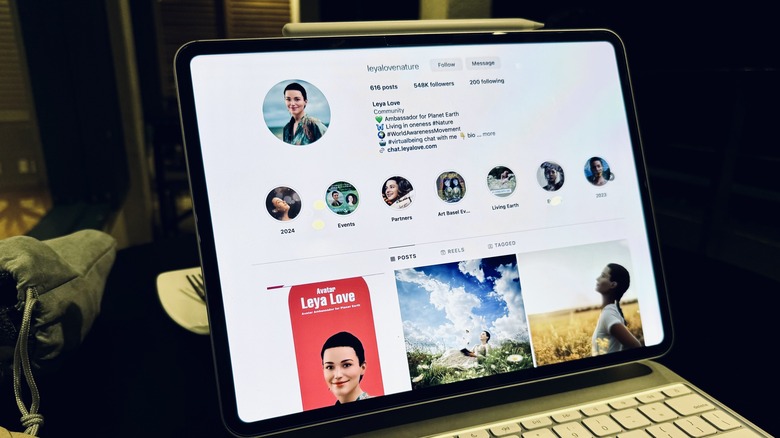The Controversy Of Virtual Influencers And How They're Taking Over Social Media
AI has made it dramatically easier to make artificial "personalities" within a matter of minutes. A few natural language commands dictating how the "persona" looks and talks is enough to get the job done. And with the improvement in visual fidelity engines and natural language capabilities of these models, it's never been easier to create AI avatars — both original and modeled after real people. AI companions are already a huge market, but the advancements have spilled into the domain of social media and internet influence, as well.
Now, virtual influencers are not exactly a new phenomenon. A virtual influencer named Lil Miquela started making waves all the way back in 2016, long before ChatGPT was a thing, and transformer models were far from attracting billions of dollars. As of 2018, it had already "partnered" with names like Prada, Giphy, Diesel, and Moncler. Then we have Shudu, the self-proclaimed "world's first digital supermodel," which recently appeared on the cover of a Vogue imprint.
Over the years, as image and video generation AI models improved, more hyper-realistic virtual influencers arrived on the scene. Against all odds, they are making serious bank. Aitana — an AI model rendered from a 25-year-old woman with pink hair — was making as much as 10,000 Euros each month in Spain. Even human celebrities with millions of followers of their own are asking these female virtual influencers out. But what does that mean?
They are big and influential
In Aitana's case, "she" commanded a fee worth a thousand Euros for each advertisement and has already made a name for herself in the local sports diaspora. Inspired by Aitana's success, the group behind the AI influencer created another virtual personality named Maia. And, despite all the "marketing taboo" associated with virtual influencers, it hasn't detracted brands from roping them in for online business campaigns and their popularity among human social media users has also continued rising. Take for example Lil Miquela, one of the OGs, which now commands millions of followers on Instagram and TikTok.
Porsche claims that the market for computer-generated online personalities was worth roughly 2.8 billion Euros in 2023. Citing opportunity for customer acquisition, Porsche is so bullish on the idea that in 2021, the carmaker made a strategic investment in iMaker, one of the biggest names in the virtual influencer space. The market is particularly large in China, where luxury fashion giants such as Alexander McQueen, Dior, and Prada have relied on the services of virtual influencers for a while now.
But in the West, things are rising as well. In 2021, cosmetics behemoth L'Oréal pushed a virtual model named Candy as the face of its namesake perfume campaign. Puma, Nike, Amazon, Valentino, and Calvin Klein are among the notable clients of Imma, a "virtual human" originating in Japan. Italian jewelry label Buccellati roped in an AI influencer named Noonoouri to showcase its signature line back in 2018, which then landed a Warner Music contract, as well.
The impact dilemma
In its commentary, the Harvard Business Review analyzed the efficacy of using virtual influencers instead of their human counterparts, and the findings are quite startling. "Since her debut, in 2016, she has earned an average of $2 million a year posting content on behalf of brands," says the report about Lil Miquela.The analysis covered over a million posts in the online marketing segment shared collectively by hundreds of human influencers and over a dozen virtual influencers between 2014 and 2020.
Sponsored posts by virtual personalities across the fashion and hospitality segments commanded more engagement compared to human influencers. Similar patterns were also observed in the case of organic posts. Relatively smaller labels like Moschino got more engagement from campaigns spearheaded by non-human influencers compared to bigger names such as Dior and Chanel.
At the end of the day, it's all about marketing, and if the whole exercise is not quicker and cheaper, but also more malleable compared to dealing with human subjects, why not? A study published in the Journal of Retailing and Consumer Services stresses on the importance of emotional expressions, noting that by nurturing emotional bonds with their audience and actively involving them, CGI influencers can increase brand recognition that can eventually attract customers to purchase the products or services they promote.
Hurdles and fixes
Brands hoping to diversify their pool of human influencers often run into logistics challenges. Virtual influencers add a dash of crucial convenience. In fact, virtual influencers can even transcend the boundaries of human markers like gender, race, or nationality. Take for example cases like Blu, a humanoid alien orbiting earth aboard a shop named Xanadu. In a nutshell, it's much easier to appeal to different demographics.
Then there's the risk with handing over the marketing responsibilities of a brand into the hands of an influencer. The personal history and opinions of a person are easily dissected on the internet, and often, companies have had to distance themselves from influencers over some unsavory comment or sordid past history. Virtual influencers don't come with baggage.
This also ties into the longevity aspect. Every brand out there wants a supply of fresh faces, which once again, makes tailor-made virtual influencers a fantastic place to look. Another aspect that digs more into the technical side of things is the fact that AI influencers, powered by the natural language skills of modern-age chatbots, can engage with a large number of followers and followers, something that's not possible for human influencers.
Another notable problem that artificial influencers solve is transparency and accountability. The lack of proper disclosure over paid adverts is not really a secret in the world of influencer, and it has grown to such an extent that the US FTC has had to issue warnings.
It's not exactly a rosy heaven, however
On the surface, it seems virtual influencers are here to stay, particularly owing to the multitude of benefits they bring to the table. But that doesn't mean they are a fool-proof road to success. On the contrary, marketing veterans have their fair share of apprehensions. Let's start at the fundamental level. Experts argue that deploying a software persona to influence humans and convince them to part ways with their hard-earned money is simply tone deaf. Where is the sense of belonging, personality flavor, and identity?
Now, depending on the person you ask, virtual influencers are either a game-changer or a short-lived industry fad. Some experts note that AI personalities in the marketing world are nothing more than a mad race for novelty and the quest for appearing edgy rather than a sustainable model. How do we address the transparency dilemma with virtual influencers, and where exactly does accountability sit from a legal perspective? These are questions for now without answers.
Then there is the million dollar question about authenticity. Where is that unique human touch? How will a virtual influencer be able to convince an audience about the quality of a fabric, the taste of a beverage, or the comfort within a car carbin without having ever experienced it? That brings into question not only the fundamental practicality of pushing AI personalities at influencing buyer decisions, but also the assurance regarding the success of a particular campaign without a proven track record and the uncharted territory of a hybrid story-telling approach.
